Time Team Episode Rating Graph
Jan 1994 - present
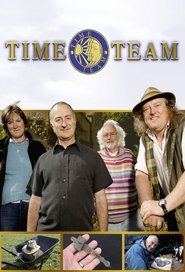
Jan 1994 - present
8.0

| E1 | E2 | E3 | E4 | E5 | E6 | E7 | E8 | E9 | E10 | E11 | E12 | E13 | E14 | E15 | E16 | E17 | E18 | E19 | E20 | E21 | E22 | |
|---|---|---|---|---|---|---|---|---|---|---|---|---|---|---|---|---|---|---|---|---|---|---|
| S1 | ||||||||||||||||||||||
| S2 | ||||||||||||||||||||||
| S3 | ||||||||||||||||||||||
| S4 | ||||||||||||||||||||||
| S5 | ||||||||||||||||||||||
| S6 | ||||||||||||||||||||||
| S7 | ||||||||||||||||||||||
| S8 | ||||||||||||||||||||||
| S9 | ||||||||||||||||||||||
| S10 | ||||||||||||||||||||||
| S11 | ||||||||||||||||||||||
| S12 | ||||||||||||||||||||||
| S13 | ||||||||||||||||||||||
| S14 | ||||||||||||||||||||||
| S15 | ||||||||||||||||||||||
| S16 | ||||||||||||||||||||||
| S17 | ||||||||||||||||||||||
| S18 | ||||||||||||||||||||||
| S19 | ||||||||||||||||||||||
| S20 | ||||||||||||||||||||||
| S21 |
Browse episode ratings trends for Time Team. Simply click on the interactive rating graph to explore the best and worst of Time Team's 246 episodes.
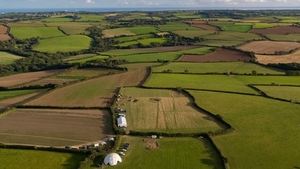
S21 Ep3
8.5
20th Mar 2022
The final day of the Cornish dig and will the team be able to resolve whether they've found a barrow or some other structure? Elsewhere, there is news about Helen's coin and some exciting finds in Matt's Bronze Age roundhouse.

S20 Ep14
8.5
30th May 2013
Tony Robinson reveals astonishing new evidence that shows how, 8000 years ago, a huge tsunami swamped the east coast of Britain.

S16 Ep2
8.4
11th Jan 2009
The Team pieces together the history and the layout of a very special wedding present – Scargill Castle, in the remote wilds of County Durham.
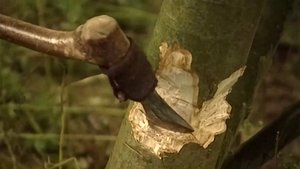
S6 Ep10
8.4
7th Mar 1999
An aerial survey of a Worcestershire field has revealed cropmarks leading to substantial Bronze Age finds. But Iron Age remains also exist. Time Team tries to sort it out. Local schoolchildren help with a bit of fieldwalking; and Mick shows how cropmarks and posthole marks become visible in fields. Francis Pryor explains the difference between Bronze Age and Iron Age and describes life in a roundhouse. Also joining the team are archaeologist Malcolm Atkin and environmentalist Liz Pearson; while wood specialist Guy Apter gets the kids to help make a Bronze Age ard (plough).

S6 Ep2
8.3
10th Jan 1999
The team are in North West England, investigating Roman finds and a possible Roman building, unearthed in a family's back garden. The house is just 100 metres from a Roman fort, and south-west of the end of Hadrian's Wall. Geophysics are using state-of-the art Swedish radar equipment, to detect foundations beneath two metres of soil. A fragment of bronze mirror hints at a domestic settlement, a vicus, that would have sprung up next to the fort. But the diggers are finding plenty of archaeology, indicating much larger and more organised Roman building, possibly a city. Through the expertise of potter Gilbert Burroughes, the team are going to try to make a Samian ware bowl during the three days. The team are joined by Roman specialist Lindsay Allason-Jones.
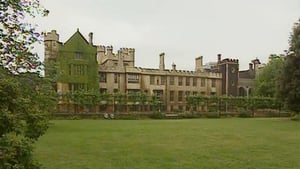
S2 Ep4
8.3
29th Jan 1995
The Time Team traveled to Lambet Palace in the heart of London. They are trying to unravel the enigma of why the Romans crossed the Thames in a different area to where they developed the city. The team needs to employ some extreme archeology to try an understand what the Romans where thinking.
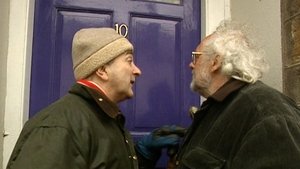
S6 Ep5
8.2
31st Jan 1999
In the 12th century many towns were designed and laid out on regular lines. The people of Plympton believe there is enough evidence to plot the layout of the medieval town which surrounds the ruins of their castle, and which was formerly owned by the immensely powerful and wealthy de Redvers family. As usual, Time Team have three days to find it. Back gardens and interiors will provide the clues, rather than frontages which have probably been altered many times in the last 800 years. So they will need plenty of help from local householders. They are joined by Plymouth city archaeologist Keith Ray and dendrochronologist Robert Howard.
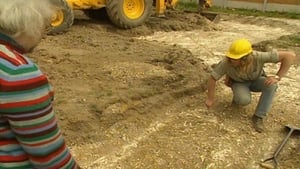
S2 Ep2
8.2
15th Jan 1995
The Time Team visit Hylton Castle near Sunderland. A local group want to redevelop the local area as a tourist attraction but don't want to disturb any hidden structures.
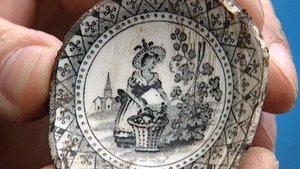
S6 Ep1
8.2
3rd Jan 1999
The Team are in Burslem, Stoke-on-Trent, to investigate what remains of Josiah Wedgwood's first factory and to discover what pottery he was making there. They find evidence of several centuries of potting and bottle kilns, including a time capsule of the pottery of Enoch Wood & Sons. Experimental archaeology: a replica creamware vase.

S2 Ep3
8.1
22nd Jan 1995
Tockenham village, in the Wiltshire countryside. Despite the fact that there are no Roman remains in Tockenham, the village's 15th century church, St Giles, has a small pagan Roman statue embedded in one of its outer walls.
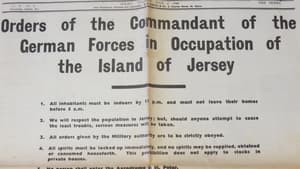
S18 Ep4
8.1
27th Feb 2011
Tony Robinson doesn't usually get to decide where the Team should dig, but in this episode he chooses his first ever site for investigation: a German anti-aircraft battery on Jersey. The dig director was Dr. Ben Robinson.
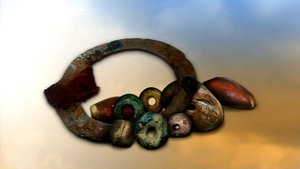
S8 Ep1
8.1
7th Jan 2001
The team are intrigued that an Anglo-Saxon cemetery should contain Roman pottery. They are joined by archaeologist Naomi Field, Maggie Darling (Roman pottery expert), Martin Welch (Anglo-Saxon expert), Irit Narkis (archaeological conservator), and Kevin Leahy (Anglo-Saxon cemeteries expert).
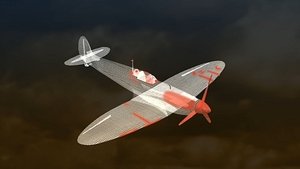
S7 Ep3
8.1
16th Jan 2000
On 23 May 1940 a Spitfire (P9373) flown by RAF pilot Paul Klipsch crashed into a field in Wierre-Effroy, France. Time Team, in concert with WWII aircraft historians and air crash investigator Steve Moss, try to find out what happened. They are joined by Klipsch's stepbrother, who last visited France on D-Day. Several residents of the village remember seeing the air battle and the crash, and Group Captain Allan Wright, who was flying in the same formation as Klipsch, comes along to help the investigation. The Spitfire wreckage is recovered, and investigation shows that Gunther Specht, flying a Messerschmitt Bf 110, shot down P9373. Experimental archaeology: Phil learns to repair a Spitfire wing flap with rudimentary tools.
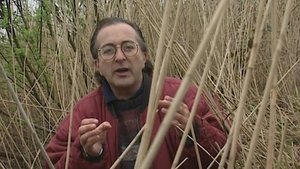
S1 Ep1
8.1
16th Jan 1994
In this first ever episode of Time Team, Tony and the team travel to Athelney in Somerset to investigate a series of hills (once islands in a bog) that became Alfred The Great last defensive positions after a series of losses to invading Viking forces. It is also the place Alfred began the great rally that saw him re-conquer most Wessex and laid the foundations of the nation that was to become England.
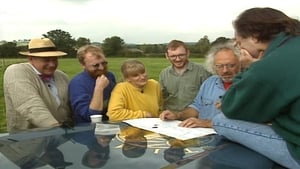
S1 Ep4
8.0
6th Feb 1994
The Time Team travel to Brecon Beacons in Wales, they have come to investigate a small man-made island in Llangorse Lake. Locals tell many strange legends including hearing the sounds of Church bells echoing across the body of water at night. The Team want to know who built the island and try to find evidence to support the stories of it eventual fall into disuse.

S21 Ep12
8.0
2nd Jul 2023
It's our final day in Norfolk, where Time Team have been called in by Dr Helen Geake to investigate the site of an early Medieval burial that has unearthed some incredible finds. Can the team make sense of this intriguing site? We have just one day left to find out!

S21 Ep11
8.0
1st Jul 2023
It's Day 2 in Norfolk, and Time Team have been called in by Dr Helen Geake to investigate the site of an early Medieval burial that has unearthed some incredible finds. Can the team relocate the grave and is it the site of a larger cemetery? We have just three days to find out!

S21 Ep10
8.0
30th Jun 2023
Time Team have been called in by Dr Helen Geake to investigate the site of an early Medieval burial in Norfolk that has unearthed some incredible finds. Can the team relocate the grave and is it the site of a larger cemetery? We have just three days to find out!
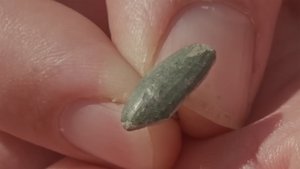
S21 Ep7
8.0
24th Mar 2023
Time Team are at Halston Hall, Shropshire, where Stewart Ainsworth believes he's found a lost Knights Hospitaller preceptory. Is Stewart right? The team have just three days to find out!
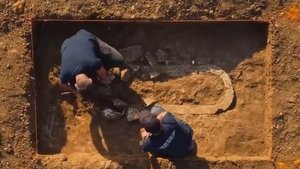
S21 Ep6
8.0
10th Apr 2022
The final day of the dig and the team re-investigate the stone sarcophagus first discovered in the 1960s. Elsewhere on the site, the trench containing the horse's head unearthed on Day Two is expanded.
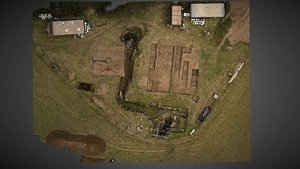
S21 Ep2
8.0
19th Mar 2022
The team's investigation into the Iron Age settlement continues and Natalie tries her hand at making some Bronze Age pottery.
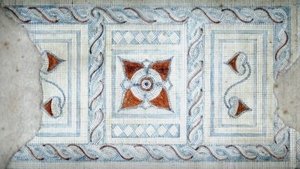
S18 Ep3
8.0
20th Feb 2011
Tony and the Team get a unique opportunity to dig at an army firing range at High Ham in Somerset and investigate a series of mosaics first discovered 150 years ago. Everything indicates a Roman villa, though perhaps not on such a grand scale. The inhabitants may have been Romanised Britons, living from the 2nd to the early 5th century. Matt volunteers as a slave for the day. When the cold east wind sets in, Phil and the other diggers temporarily "down tools". They are joined by Martin Brown from the Defence Estates and Roman finds specialist Philippa Walton.
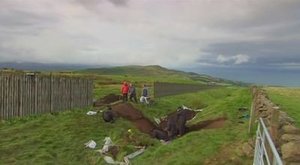
S16 Ep3
8.0
18th Jan 2009
Working with archaeologists from Queen's University in Belfast, the Team takes up the challenge to unlock the prehistoric secrets of the headland at Knockdhu, County Antrim.

S15 Ep13
8.0
30th Mar 2008
For the final episode of the 2008 series the team head to the village of Portskewett in South Wales to investigate a field which is intriguingly named Harold's Field. Local legend has it that King Harold built a hunting lodge there the year before he lost the Battle of Hastings. The field is a mass of big earthworks and historical documents do record Harold building a lodge somewhere round the village of Portskewett. Within minutes of digging, the team discover that the site was not confined to just Harold and the Saxon period, having been used since late Roman times until well into the Middle Ages.
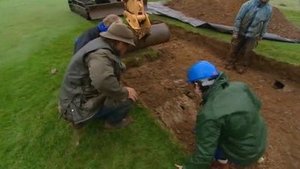
S14 Ep1
8.0
14th Jan 2007
The team battle the tail end of Hurricane Gordon to investigate the last keeill standing, preserved beneath a golf course on the Isle of Man. A thousand years ago the island was dotted with these keeills, or small stone chapels, most of which have completely disappeared. Mick, an avowed enthusiast for early Christian buildings, is in his element. Sensational finds keep coming, including perfectly preserved plaited human hair, and a specimen of Ogham script. The team are joined by local archaeologist Andy Johnson, keeill expert Nick Johnson, and Viking specialist Dawn Hadley
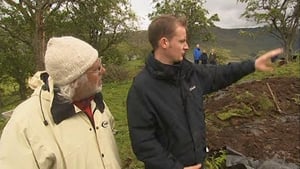
S13 Ep13
8.0
16th Apr 2006
Tony and the team journey to Applecross in the north west of Scotland to excavate a broch, a monumental dry-stone tower that was one of the largest Iron Age structures in Britain. But they are hampered by stony soil and a massive overhead power line. They are joined by Scottish Iron Age specialists Ian Armit, Andy Heald, Cathy Dagg, Noel Fojut.
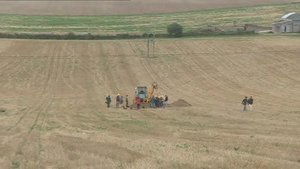
S11 Ep13
8.0
28th Mar 2004
Pigs rooting in a windswept field in Dorset unearthed fragments including Roman mosaic floor tiles. In addition, a Bournemouth University excavation team located some burials nearby. The farmer, Simon Meaden, has asked Time Team to investigate further. John's geophysics survey reveals a lot of activity. Very soon multiple finds start appearing, and to Tony's delight he is allowed to dig up a little beaker. Archaeologist Mike Parker Pearson produces a timeline of prehistoric and historic burial practices. Phil's trench is invaded by chickens. Gradually a complex picture emerges of human activity here over thousands of years, including a heated Roman villa with bath-house.

S11 Ep7
8.0
15th Feb 2004
The team are revisiting the garden of Furnace Cottage in Churnet Valley, where the previous excavation of an Elizabethan blast furnace produced evidence of much earlier iron-making. Stewart surveys the landscape, to piece together a picture of water flow and other features essential to iron smelting. But John is convinced that there is strong geophysical evidence for a furnace a mile away at Eastwall Farm. It could even be water-powered - a major discovery. They build a medieval style bloomery. They are joined by historian Pete Brown, and archaeologists David Cranstone, Bill Klemperer, Deb Ford, Gerry McDonnell, Tim Young.
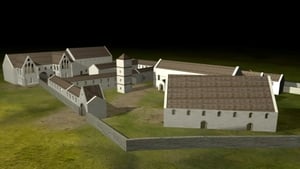
S7 Ep13
8.0
26th Mar 2000
The team head to the ancient city of York for a special live dig. Finds include a Roman skeleton with hobnailed boots, and a Viking leather shoe. They are joined by Barney Sloane (site supervisor), Peter Addyman (director of the York Archaeological Trust), archaeologist Paul Thompson, osteoarchaeologist Margaret Cox, architectural historian Beryl Lott, finds expert Lindsay Allason-Jones, Denise Allen (glass specialist), Viking expert Patrick Ottaway and TV personality Sandi Toksvig. They build a brick kiln and make a Roman-style glass jug. Environmental archaeologist Andrew Jones sifts through organic debris to determine the diet of the inhabitants. Medical historian Carole Rawcliffe demonstrates some medieval herbal remedies.
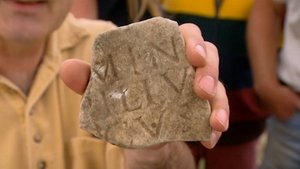
S7 Ep11
8.0
12th Mar 2000
The team dig for Roman remains in Greenwich Park, London. They are joined by Hedley Swain from the Museum of London, Harvey Sheldon from the University of London and Mark Hassel from University College, London. Chris Owen (reconstructor) demonstrates Roman plastering techniques and ingredients, and paints a fresco with Victor. A remarkable find creates much excitement, boosting their hopes of identifying a Roman temple. Stewart suggests that Watling Street may have run through the park. For results and reconstruction see https://www.royalparks.org.uk/parks/greenwich-park/things-to-see-and-do/ancient-greenwich/roman-remains
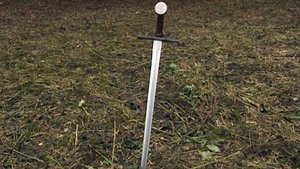
S4 Ep5
8.0
2nd Feb 1997
Recorded between 5 and 7 July 1996, the team try to discover a medieval castle and a Jacobean mansion. Barry Scott (bladesmith) makes a sword using traditional techniques, and the Conquest Society demonstrates hand-to-hand combat with authentic armour and chainmail.
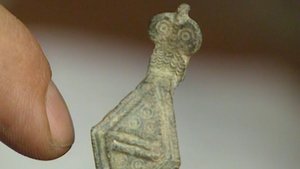
S3 Ep6
8.0
11th Feb 1996
Recorded between 28 and 30 August 1995. The team arrive in a large square field about 20 miles from Colchester. This is an area typically rich in Roman activity. Several remains have previously been dug up, including coins, an elaborate key, and Samian ware. Adrian Thorpe, the farmer, wants to know more. The indications are of a settlement with high status buildings, maybe timber-framed. With recycled fragments of genuine Roman glass, fired up in a homemade furnace, glassblower Ed Iglehart creates an authentic conical beaker. Among hundreds of finds is a metal owl brooch. They are joined by Jude Plouviez from Suffolk County Council, Roman specialist Lindsay Allason-Jones, environmental archaeologist Peter Murphy, and coin specialist Daphne Briggs.
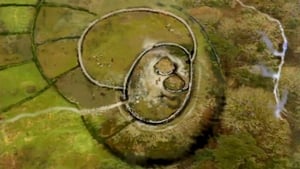
S3 Ep1
8.0
7th Jan 1996
Recorded between 17 and 19 March 1995, the team try to discover what a 2000-year-old underground chamber (fogou) beneath Jo May's garden was used for. Dowser Hamish Miller shows the extent of the fogou beneath the lawn, and Tony tries his hand at dowsing. But Mick is skeptical, preferring to rely on the geophysical survey. They are also trying to find the Iron Age settlement that would have adjoined the fogou. Joining the team are archaeological geophysicist Susan Ovenden, and county archaeologist Nick Johnson. The programme includes an experiment in extracting pure tin from the local stream.
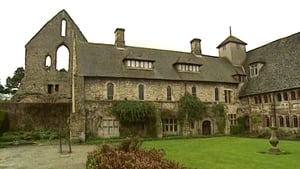
S1 Ep3
8.0
30th Jan 1994
The Time Team go to the small town of Much Wenlock, after they receive a letter from a resident explains a recent excavation uncovered possibly the oldest house in the town. What they discover is the remains of an old Saxon village transitioning into a larger newer Norman settlement.
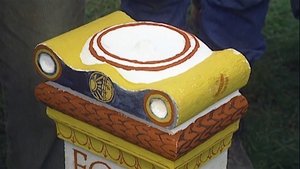
S6 Ep9
7.9
28th Feb 1999
Time Team revisit a live dig from 1997, where they found a large Roman complex in a Gloucestershire field. But at the same time, geophysics recorded evidence of more buildings. And so the team have returned to investigate a greatly expanded area. Almost immediately Phil uncovers some impressive looking archaeology. They decide to build a Roman altar with a special inscription. They are rejoined by Roman specialists David Neal and Lindsay Allason-Jones.
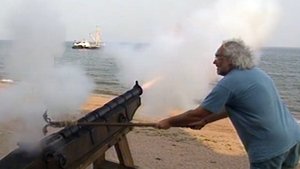
S3 Ep4
7.9
28th Jan 1996
Recorded between 30 June and 2 July 1995. 20 years ago a teenage boy discovered a 400-year-old bronze cannon in water close to the south Devon coast. Nobody has yet identified the ship it belonged to. Will there be enough left of the wreck to identify it? As usual, Time Team have only three days to find out. Tony is looking forward to getting into his diving suit. But the team cannot dive until the wreck's archaeological supervisor, Chris Preece, arrives. Meanwhile the wreck's finder, Simon Burton, tells his story. Undeterred by disappointing geophysics results, the divers go ahead with their search in murky water. On land, armoury expert Nicholas Hall demonstrates the cannon. Ultimately Robin comes up with a theory about the ship's origin and purpose.
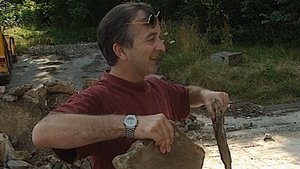
S4 Ep6
7.9
9th Feb 1997
Filmed from 2 to 4 August 1996, this episode looks for a Roman villa that was first partially discovered 90 years before by William Hawley. Part of the site - a former army barracks - is covered in concrete, which at least protects what is underneath. But as they don't know exactly where the villa is, it could be a problem for both the diggers and the geophysics team. The team are joined by Duncan Coe (county archaeologist), Mark Corney (Roman buildings expert) and Lindsay Allason Jones (Roman finds). At the end of day two Lindsay supervises an al fresco Roman-style meal. By day three they have the bare outline of a very substantial, high-status building complete with mosaic floors and central heating. But then unfortunately the time runs out.
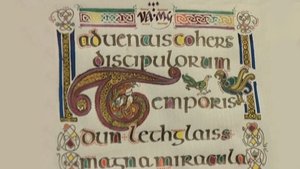
S5 Ep7
7.9
22nd Feb 1998
Recorded between 19 and 21 February 1997, the team look for the early monastic buildings on Cathedral Hill, where according to legend St. Patrick built a monastery and was buried. They are also digging up medieval finds, including roof tiles and glass, which indicate a high status building. They soon identify the large double ditch which originally enclosed the monastery complex. Victor tries his hand at medieval calligraphy and helps create an illuminated manuscript with a portrait of a familiar face, complete with hat and feather. We also see some vellum making.

S17 Ep13
7.9
17th Apr 2011
An eagle-eyed forest ranger spotted bits of Roman building poking out from the forest floor in Cambridgeshire's Bedford Purlieus Wood.
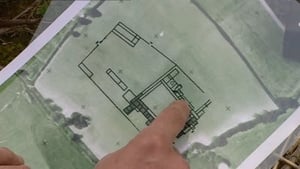
S10 Ep2
7.9
12th Jan 2003
Time Team travels to Somerset to investigate the discovery of an exquisite Roman mosaic in a field. The geophysical survey clearly indicates the presence of a substantial and well-preserved villa on the site. One of the main problems they tackle is the development of the building complex through time. By targeted examination of the structural remains, the archaeologists uncover evidence of several phases from a more humble early timber building to a two-story grand villa with two large ranges and a courtyard gate structure. In the end, the site turns out to contain one of the largest Roman villas in the UK.
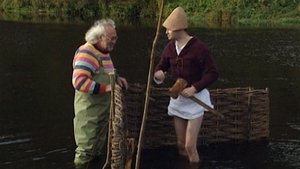
S5 Ep8
7.9
1st Mar 1998
Filmed between 10 and 12 October 1997, Time Team go to High Worsall, near Middlesbrough, a village that almost completely disappeared hundreds of years ago. Finds: 14th century buildings and manor house, pristine spindle whorl. Experimental demonstration: fishing and cooking caught fish. Also, historians Robin Bush and Dawn Hadley are followed while they research the village and create a timeline.
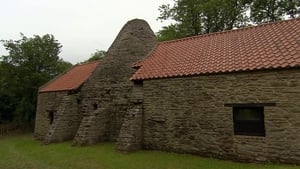
S18 Ep5
7.9
6th Mar 2011
Dense and tranquil woodland in the County Durham countryside provides an unlikely venue for Time Team's investigation into the earliest days of the Industrial Revolution.
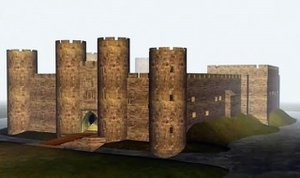
S15 Ep1
7.9
6th Jan 2008
The crumbling ruins of Codnor Castle are a sad remnant of the imposing home of the De Grey family - knights who saw action in almost every important medieval battle including the crusades and Agincourt. Today Codnor Castle lies in ruins and there's almost nothing known of how it looked in its prime. As the remains above ground get an overdue renovation, the Time Team risk the dangers of hidden mine shafts in the Derbyshire coalfields to dig into the heart of a building that once dominated the landscape to trace the castle's history. It lives up to the team's hopes as they strike gold with a 600-year-old gold noble coin as well as uncovering a huge round tower and, for the first time in the history of the programme, a drawbridge.

S5 Ep2
7.9
11th Jan 1998
The team go to the Somerset levels in search of a 4,000-year-old wooden trackway. The quickest way to get across the marshes that used to exist here in the Bronze and Iron Ages was across wooden walkways. Now the team hope to find evidence of these footbridges.
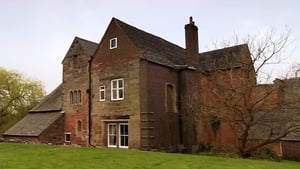
S18 Ep7
7.9
20th Mar 2011
Tony and the Team discover evidence of a dynasty that arrived with William the Conqueror and went on to produce two queens of England: Elizabeth I and Lady Jane Grey.

S11 Ep6
7.9
8th Feb 2004
Green Island in Poole Harbour has already shown that it was a significant centre of Iron Age activity, with evidence of industrial activity and trading to and from the continental mainland. But it has never been properly excavated. Two huge jetties - now buried - indicate either a port or a defensive structure. The island is a SSSI (Site of Special Scientific Interest), which means hand-digging only, and replacing the topsoil. Very soon the finds start to multiply. Of particular interest is evidence of shale working for jewelry, and iron smithing. They are joined by Project Director Eileen Wilkes, archaeologist Miles Russell, Iron Age specialist John Collis, and metallurgist Roger Doonan. Experimental archaeologist Jake Keenan demonstrates shale working with primitive tools. Geomorphologist Vincent May explains that in prehistoric times the water level was two metres lower, and Green Island was much bigger.
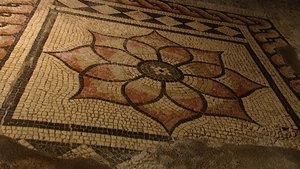
S8 Ep12
7.9
25th Mar 2001
In highlights from a previous live dig, the team visit the ancient city of Canterbury to investigate three separate sites, all connected by their religious functions. There is a Roman temple, a monastery, and a medieval site devoted to the construction of sacred buildings. Celebrity guests Liza Tarbuck and Sandi Toksvig are in attendance.
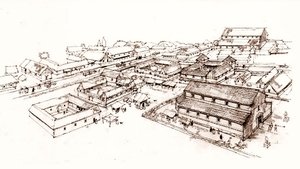
S7 Ep2
7.9
9th Jan 2000
In 300 A.D. Corinium Dobunnorum was England's wealthiest city next to Londinium. Now it's the pleasant Gloucestershire town of Cirencester, and Time Team are visiting the leafy suburban Chester Street, where they hope the back gardens will yield clues about the bustling Roman city and its main highway, Ermine Street. Could a Roman temple have occupied this site - or even rarer, an early Christian church? They need to knock on a few doors to ask about digging up their plots. There is a bottle of champagne for anybody who can find a tessellated pavement. They are joined by Roman architectural historian Tom Blagg, coin expert Richard Reece and mosaic expert David Neal. The Ermine Street Guard offer Tony venison stew, and use a wooden crane to erect a stone column, fashioned by mason Giles MacDonald. In the public presentation, Stewart outlines a picture of the whole city, ably assisted by Victor's drawing. Among many Roman finds are coins, a brooch, a spoon and a bone die.
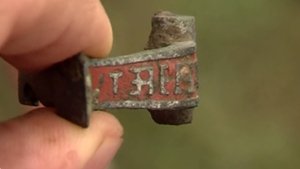
S5 Ep4
7.8
25th Jan 1998
3 days of live excavation. The weekend ended with evidence of a Romano-British villa complex that is one of the largest ever found in Britain. This programme is an edited version of that weekend. They discover that the villa dates from the very first days of the Roman occupation. Amongst their new finds is an entire, untouched Roman water course.
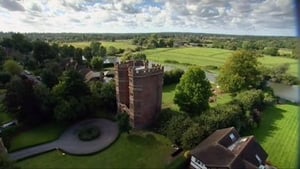
S13 Ep4
7.8
12th Feb 2006
The team visit Wayneflete Tower which is all that remains of a palace. Over three days they piece together the story of a site that evolved into one of the most stunning buildings of early Tudor times. They are joined by historic buildings expert Jonathan Foyle, John Guy (historian) and dendrochronologist Mick Worthington.
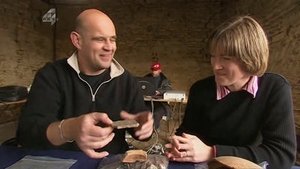
S12 Ep13
7.8
3rd Apr 2005
An unusual horse bit, some posh finds and carved stonework lead Time Team on a search for a Norman hunting lodge in Northamptonshire. But it isn't long before the lodge's massive stone walls begin to look a little less impressive, and, under the forensic trowels of the diggers, the lodge shrinks in every direction. But royal forests were fiercely protected by the Norman nobility; why are there buildings here at all? Does the Domesday Book hold a clue? It seems as if this area was home to an extraordinary number of pigs... Have the Team come across one of the very first factory farms?
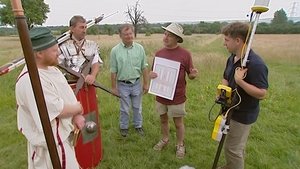
S9 Ep6
7.8
10th Feb 2002
It is 40 years since amateur archaeologists dug up Roman remains near Ermine Street, now hidden beneath Cheshunt Park. Time Team tell the story of the original excavation, using the detailed plan to conduct their own investigation. They believe the site's proximity to the road is the key to this dig. With some brilliant work by Stewart and John, they soon locate part of the road. Though frustratingly they cannot find any trace of it beneath the surface, they do find a brewery and possibly a pub. The brewing process is described by ancient technology expert Peter J. Reynolds. They conduct a mini-experiment comparing Roman surveying techniques with Henry's modern equipment. They are also joined by Roman experts Rosalind Niblett and Harvey Sheldon.
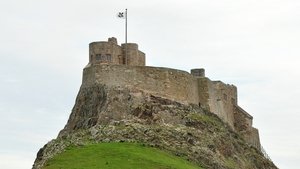
S8 Ep10
7.8
11th Mar 2001
The team look at a wide range of historical deposits on the iconic Holy Island of Lindisfarne, including evidence of military activity in the 16th and 17th centuries. They are joined by John Heward (architectural historian), archaeologists Caroline Hardie and Richard Fraser, and pottery expert Jenny Vaughan. Phil Harding helps cooper Jim Newlands to make a traditional timber cask.
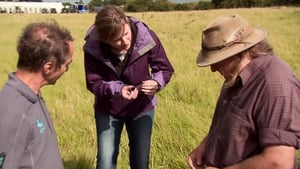
S20 Ep2
7.8
6th Jan 2014
Featuring the Team's largest ever range and number of items from Roman Britain and their most ambitious geophysics project to date.
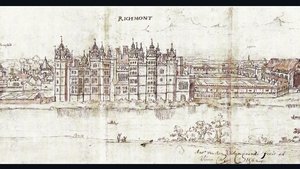
S5 Ep1
7.8
4th Jan 1998
Filmed between 25 and 27 July 1997. The team are camped on an immaculate suburban lawn next to the Thames. They are searching for the now vanished Richmond Palace, site of the death of Elizabeth I. But amazingly nobody is exactly sure of its whereabouts. The first task is to dig up the lawn under the supervision of landscape gardener Martin Whitaker. Immediately they find evidence of a substantial high status Tudor building. They are joined by palaces expert Simon Thurley and local historian John Cloake. Tudor expert Hazel Forsyth shows Carenza how to make a pomander. Plants from the garden are used by Maria Lis-Balchin to brew up some Elizabethan perfume. The property owner was The Baron van Dedem.
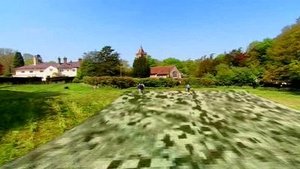
S14 Ep10
7.8
18th Mar 2007
Archaeologists in Chesham in Buckinghamshire believe they've found the remains of a medieval building under the manicured lawns of a Georgian house.
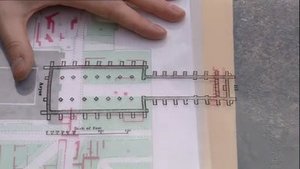
S11 Ep1
7.8
4th Jan 2004
The team are on the trail of a medieval mystery. Founded by Henry V and built by his son Henry VI, Syon Abbey was a large, wealthy monastery for nuns of an obscure Swedish order. During the reign of Henry VIII it vanished. Its remains lie beneath the lawns of modern Syon House, designed by Capability Brown. What they find is on a huge scale. But there is disagreement as to what kind of building it was. After investigating the foundations of the House, Stewart and Jonathan reach an agreement on the extent of the church. They are joined by buildings historian Jonathan Foyle and monastic expert Barney Sloane.
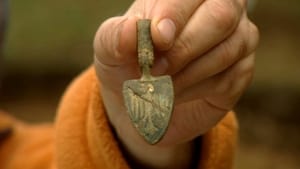
S8 Ep2
7.8
14th Jan 2001
Derek Batten bought a plot of land advertised as a castle and moat; but there is little sign of a castle other than a tree-covered mound surrounded by a huge ditch. So he has asked Time Team to sort it out. Because the site is a scheduled ancient monument, the team have to get permission from English Heritage for strictly limited excavations. To complicate matters further, Tony has to adjudicate on a long-running boundary dispute. The team is joined by castles expert Philip Dixon. Phil Harding gets kitted-out in chainmail as a Saxon footsoldier, facing a mounted Norman warrior on a Spanish stallion. The site is finally identified as a ringwork castle, built on a previous Saxon structure around the time of the Norman Conquest.
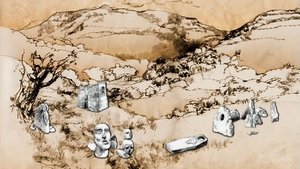
S8 Ep3
7.8
21st Jan 2001
In deepest Wales lies an extraordinary site, with a Megalith, a Neolithic tomb, a Norman watchtower, early Christian symbols, and a natural spring. From this spring, the landowner has recovered an astonishing variety of coins, sculptures and jewelry. It is almost too good to be true, rather like an ancient theme park. So begins one of Time Team's most remarkable digs. Geophysics shows no structure anywhere on the site. The megalith is far too shallow to have stayed upright for thousands of years. And when the team unearth a sword, they start to get suspicious. They are joined by Celtic ritual expert Miranda Green, architectural historian Will Hughes, and Iron Age specialist Ian Stead. Results show that the site has been 'salted' and the finds have all been placed or build between the 19th century and as late as the 1980s. More info can be found at Llygadwy.
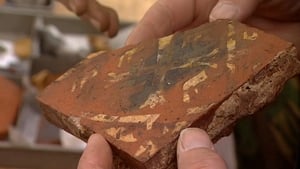
S7 Ep7
7.8
13th Feb 2000
Coventry's modern cathedral replaced the old cathedral, bombed to destruction by the Luftwaffe in World War II. A 3rd cathedral, St. Mary's, was also a Benedictine priory, demolished in the 16th century by Henry VIII. The building's destruction is explained. Tony gets a guided tour of Coventry's sister cathedral at Lichfield, by historian Richard Morris. Glass technician Colin Telford creates a stained glass panel. Meanwhile beautiful patterned floor tiles start to emerge, along with rose- and grape-shaped ceiling bosses. Phil uncovers a huge pier which would support the entire roof, though the spire would be wood rather than stone. And at the very end of day 3, they uncover a stone-lined tomb, which has to be completely excavated; so uniquely the dig extends into a 4th day. They are joined by osteoarchaeologist Margaret Cox.
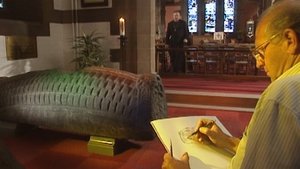
S4 Ep4
7.8
26th Jan 1997
Filmed from 14 to 16 June 1996, in this episode the team try to find out why the graveyard of a 19th century church features large tortoise-shaped gravestones dating back to the Dark Ages. The team are joined by Scottish prehistorian Anna Ritchie and archaeologist Steve Driscoll.
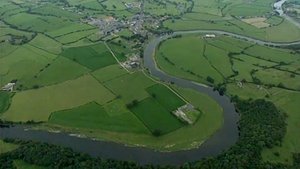
S1 Ep2
7.8
23rd Jan 1994
Ribchester in Lancashire has been known for some time as a site of a Roman fort. The Time Team arrive in the town to answer two questions, one is to consolidate all the previous excavations on the site, and the second to define the outline of a possible older wooden fort that is thought to have been in the area.

S17 Ep2
7.8
25th Apr 2010
Time Team descend on the Isle of Mull at the invitation of two local amateur archaeologists to investigate a mysterious set of earthworks in a forest near Tobermory. Could they be the remains of a chapel from the time of St Columba?
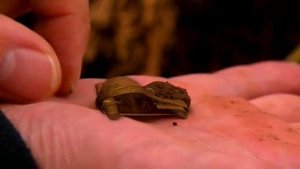
S14 Ep11
7.8
25th Mar 2007
A local metal detectorist has been visiting the same field in Godstone in Surrey for the past 15 years, and in that time has discovered a huge collection of Roman finds. Around 600 coins, many of them of high value, have been recovered from the field, as well as a collection of brooches and other more unusual items, including what looks like a metal sceptre handle. Local archaeologists believe that the number and value of the finds means that they may have been deliberate offerings, pointing towards a possible Roman temple or religious site. The possible sceptre handle is similar to ones that have been found at another Roman religious site nearby and may have been used by priests. The site is positioned close to a Roman road connecting London to the south coast and has never been excavated, although English Heritage did commission a geophysics survey. Local archaeologists have been wondering what lies beneath the surface for many years, and called in Time Team to help them find out.

S12 Ep3
7.8
16th Jan 2005
On 29 November 1944, two US Douglas A-26 Invader bombers crashed in Warton Marsh. Both planes, along with a number of others, had left Warton Airbase in formation, en route to join forces in the preparations for the Battle of the Bulge. Only one minute off the runway and 1,000 feet into the air, the aircraft collided and came to rest in the marsh. All the crew died. Their bodies were recovered from the planes, but an investigation into the causes of the crash was inconclusive. For this programme, Time Team enlisted a veteran air crash investigator, along with the RAF's 'crash and smash' team and other experts to try to find out what caused the crash. Each of the planes, including the engines, was believed to be relatively intact and, it was hoped, would provide the necessary information to determine why these two planes collided.

S10 Ep8
7.8
23rd Feb 2003
Time Team revisits Athelney Abbey, the hideaway of Alfred the Great, and also the very first site investigated by the team one hundred programs earlier. Ten years of technological advances in the meantime has significantly enhanced their geophysical survey methods and changes in heritage management attitudes have also given them the permission to dig at the site. Slag and magnetic readings suggest that iron and steel was smelted and worked at Athelney, the latter being a good indication of Anglo-Saxon presence. At the abbey site itself Phil and his diggers uncover several burials. Reenactors show Anglo-Saxon dress and weaponry and their Viking counterparts as the experimental part of the program, while Carenza and Tony make – and burn – traditional Saxon cakes. The archaeologists find a number of objects, a Medieval graveyard associated with Athelney abbey, a metalworking complex, and a substantial defensive ditch dug in the Iron Age, but reused in the time of king Alfred.

S10 Ep1
7.8
5th Jan 2003
Time Team investigates a back garden in Raunds, where a skeleton – aptly named Henry by his discoverer – has been found along with his Anglo-Saxon grave goods. The burial probably fits in with a number of other Saxon sites in the town and is seen in light of these. The team also look carefully at Henry himself, his attributes, anatomy and ailments, and have to tackle several logistical problems in association with excavating in such a constrained area as a garden. However, they also find the opportunity to extend the investigation across the fence to an allotment area behind the gardens. The experimental part of the program looks at various objects and medical remedies found in Anglo-Saxon society, presented by historical reenactors, while Victor recreates the appearance of Henry. In the end the archaeologists do confirm the presence of an Anglo-Saxon cemetery with various pieces of grave goods at the site, probably placed in relation to older Bronze Age burial mounds.
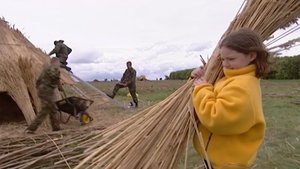
S8 Ep7
7.8
18th Feb 2001
The team are on Salisbury Plain, over 38,000 hectares of land in South West England owned by the MOD. Though the whole area is rich in ancient remains, they are concentrating on Beeches Barn, an unprepossessing field rumoured to conceal an Iron Age roundhouse. Alongside the dig, they are helping Ian Apter to build one of the team's most ambitious projects, a full-size thatched roundhouse. Early geophysics results indicate not one, but several banjo enclosures. Such features are always accompanied by Roman buildings. The aim is to get the site listed as an ancient monument, but time is running out. They are joined by army volunteers, and Iron Age expert Peter Reynolds. The many finds include a 2,000-year-old bone comb, a quern-stone and a Roman coin.
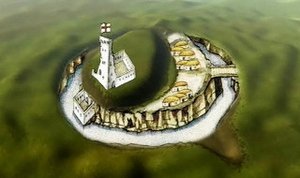
S15 Ep9
7.7
2nd Mar 2008
The team visit Northern Ireland to locate one of the most important sites in Anglo-Irish history. A hilltop castle above the city of Dungannon, stronghold of the powerful O' Neill clan, was seized by English forces in 1602, setting off events that would cause unrest in the two countries for centuries to come, the same hill was a top secret British Army base for the last 50 years.
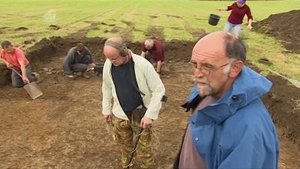
S12 Ep7
7.7
13th Feb 2005
For years, a field near Standish in Gloucestershire has yielded Roman brooches, mosaic tiles and coins. The finds point to a sizeable villa somewhere nearby - but so far none has been found. Tony Robinson and the team have just three days to solve the mystery. There are plenty of signs that people lived in the area from the Iron Age through to the Roman period, but no sign of the villa. But clue by clue the archaeologists piece together the puzzle to reveal an extraordinary picture of several generations of one family living through huge social change and gradually improving their lifestyle as Romanised Britain became more and more prosperous.
S14 Ep14
6.0
1st Mar 2007
Tony Robinson talks us through the renovation of, perhaps, one of the most important homes ever built: Augustus Pugin's home in Ramsgate. In the mid-19th century, Pugin reinvented a medieval style of architecture that became known as Gothic Revival. Best known for his work on the Houses of Parliament, he built the Grange in Ramsgate in the 1840s using his own money and with, as he put it, "not an untrue bolt or joint from foundation to flagpole". Amazingly, the house was about to be destroyed in 2004 when the Landmark Trust set about restoring it. Time Team follows the transformation of the property and visits other Pugin creations around the country. It promises to be an intriguing mix of Grand Designs and Restoration - what could be better?
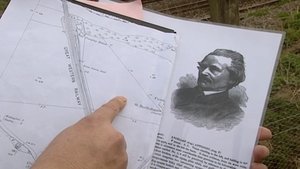
S8 Ep9
6.2
4th Mar 2001
While laying Brunel's Great Western Railway line 50 miles from London, navvies discovered mosaic floors indicating a Roman villa. The mosaics were broken up and the whole site ignored, until recent photographs of cropmarks showed the outline of the villa, among other features. Geophysics signals are also very strong. The trouble is, the diggers can find no structure beneath the surface. They are joined by Bernard Thomason from English Heritage, mosaics expert David Neal, Tim Allen of Oxford Archaeological Unit, and Jillian Greenaway from Reading Museum. Reconstructor Chris Owen supervises the recreation of a mosaic using thousands of tesserae.

S9 Ep10
6.4
10th Mar 2002
The medieval castle of Beaudesert in Henley-in-Arden suddenly vanished without trace, leaving a single stone on top of a mound. The people want to know what it looked like. "The Mount" as it's called by the locals, is a popular beauty spot and has suffered from erosion. Also, as it's a scheduled monument, there are limits to what digging can take place. The castle was built by the de Montforts in the early 12th century. Henry and Stewart create a simple 3D clay model of the building, which follows the natural contours of the hill. It looks as if the castle was demolished and the pieces sold off in the 15th century. Using authentic tools, bowyer Steve Ralphs makes a medieval longbow, which is tested against a crossbow of a similar period. Castles expert Sarah Speight describes daily life in the castle. Finds include a section of carved pestle and mortar.
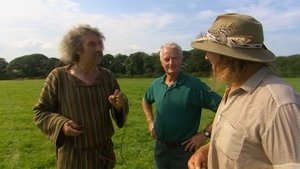
S9 Ep7
6.5
17th Feb 2002
Two massive hill forts on the Lizard Peninsula in Cornwall, at Gear and Caer Vallack, have never been excavated. In fact, no major Cornish Iron Age site has ever been investigated. Time Team have been given the tall order of making some sense of these two sites in three days. For many years, a local farmer has been collecting Stone Age and Iron Age artefacts. Already the geophysics results are showing a potential wealth of ancient human activity. But the sites are so huge that the team will have to be very selective. They are joined by Ian Morrison from English Heritage, ancient technology expert Peter J. Reynolds, pottery experts Carl Thorpe and Henrietta Quinnell. Re-enactor David Freeman demonstrates a sling-shot, a simple but effective weapon. Phil and Peter visit a reconstructed round house nearby.
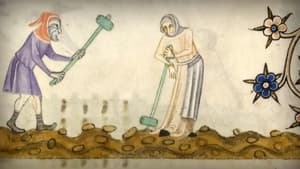
S16 Ep12
6.5
22nd Mar 2009
Time Team sets out to unearth the secrets of the deserted medieval village of Ulnaby in Durham. The challenge was to tell the story of a whole lost village – a once-thriving rural world
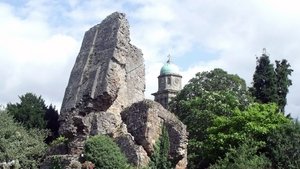
S8 Ep11
6.6
18th Mar 2001
All that is left of Bridgnorth Castle is the 70-foot Norman tower. The team are in the park, trying to piece together what it looked like in its heyday, 900 years ago. They must dig outside the area of the scheduled monument. Phil and a group of enthusiasts recreate a 12th-century catapult known as a perrier. They are joined by castle specialist Philip Dixon, Mark Horton from Bristol University, Small Finds expert Lynne Bevan, and pupils from nearby Oldbury Wells School. Finally Philip is able to describe the construction and layout of the castle.
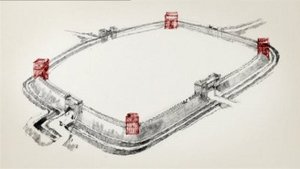
S11 Ep5
6.6
1st Feb 2004
Nobody knows what happened immediately after the Romans arrived in 43 AD, because no Roman fort has been discovered in this part of South East England. Time Team are on a mission to find the missing link. Local archaeologist Paul Wilkinson believes he has already found a military ditch, which would surround such a fort. It's a prime site, right next to Watling Street. However geophysics cannot find any evidence for a ditch. So begins one of their most frustrating digs, directed by Neil Holbrook. Phil enlists in the Ermine Street Guard for a day. They are joined by Roman expert Tony Wilmott and pottery specialist Malcolm Lyne.
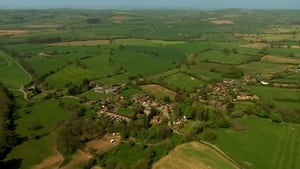
S19 Ep2
6.6
29th Jan 2012
There's a problem in the chocolate-box village of Bitterley in Shropshire. The village's school and cottages cluster prettily around the green. But the village church and the manor house lie more than half a mile away, on the other side of a lumpy, bumpy empty field.
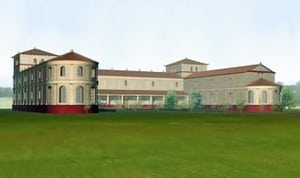
S15 Ep5
6.6
3rd Feb 2008
Tony Robinson and his team unearth the secrets of a Cotswolds field. Hundreds of Roman coins and bits of masonry have been found on this land but it's the chance discovery of a piece of mosaic floor that has really got the archaeologists excited. The great and the good of Roman Britain built their posh houses in the Cotswolds, a sort of ancient stockbroker belt.
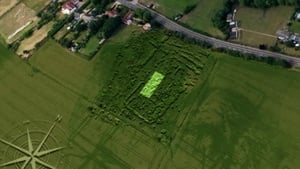
S20 Ep8
6.7
17th Feb 2013
Roman remains have been turning up in an Oxfordshire field for decades, where a student in the 1960s believed he had uncovered a Roman mosaic.
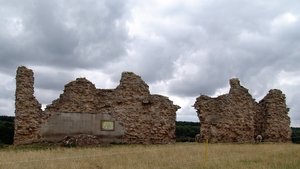
S19 Ep11
6.7
8th Apr 2012
Tony and the Team don their hunting green, pick up their bows and arrows and head for the fringes of Sherwood Forest, where residents of Clipstone village in Nottinghamshire believe some impressive ruins in a farmer's field may have played a part in the ancient tales of Robin Hood and Bad King John. Landowner Mickey Bradley hopes that the site will be preserved as a heritage site. High class stone carvings indicate what is likely to be one of King John's hunting lodges or a ceremonial hall, rather than a fully fledged palace. They are joined by Tony Rotherham, who describes the practices and terrible punishments meted out to local poachers such as Robin Hood. He was probably only one of many outlaws inhabiting these forests, which were maintained by royalty for hunting and other amusements. Tony Rotherham also demonstrates the unmaking ritual, or butchery of a deer carcass.
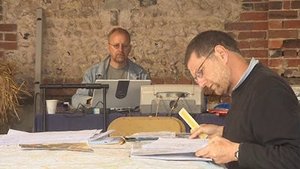
S13 Ep9
6.8
19th Mar 2006
The team travels to what could be a Neolithic settlement in the Sussex Downs. Initially discovered by John Pull in 1923, the site is littered with remains of 6000-year-old flint mines. But Pull claimed to have discovered a second site nearby, which has so far eluded other diggers. The team are joined by archaeologist Miles Russell, pottery expert Sue Hamilton and wood specialist Maisie Taylor. Neolithic lifestyle specialist Jacqui Wood makes some elderflower tea and threatens to make a new hat for Phil. Phil and Francis demonstrate the relative merits of mesolithic and neolithic axes.

S17 Ep3
6.8
2nd May 2010
Tony Robinson and the Team get their feet wet as they examine a stretch of the River Tees where local divers have discovered more than 2,000 high-quality Roman finds. The river flows past one of the most impressive Roman forts in northern Britain, and over three days the archaeologists cast their net far and wide investigating the buildings, roads and structures around this strategic crossing. However, the big challenge is working out what was going on in the middle of the river, where most of the finds came from, and that means a variety of Time Team's finest squeezing into wetsuits and braving the fast flowing river Tees.
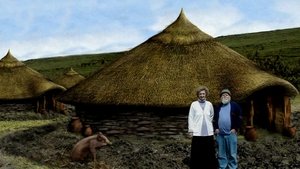
S7 Ep4
6.8
23rd Jan 2000
Time Team are doing a spot of gardening. Residents have presented them with evidence of historical activity, in the form of pottery shards and lumps and bumps in the landscape. While Victor sketches out possible buildings, Stewart tries to make sense of the trackways and earthworks in this spectacular landscape overlooking Portland Bill. Could there be a 4,000-year-old henge here? Back in Phil's trench in the garden, the first clear signs of a roundhouse emerge. Carenza helps potter Jim Newbolt to make and fire a collection of replica Iron Age and medieval pots.
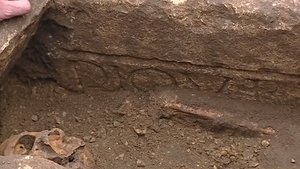
S9 Ep2
6.8
13th Jan 2002
Ancaster has yielded numerous Roman finds as well as a large cemetery with several sarcophagi from the period. In addition, the church is known in British archaeology for a Roman inscription dedicated to the deity Viridius. Phil finds the cemetery level, while Carenza discovers a layer filled with jumbled up human remains mixed with other bones. In the cemetery, Phil eventually uncovers the lid of a possible sarcophagus, and its excavation could thus require certain precautions due to the potential for lead poisoning and presence of biological hazards. However, the object proves to be a cist burial, as well as hazard-free. Incredibly, one of the cist slabs also turns out to contain yet another inscription to the god Viridius. In the end, the archaeologists suggest that the massive defences were ordered to be put up by the Roman central administration in Britain, and completely disrupted the original town layout.
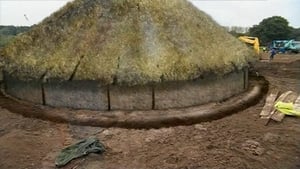
S13 Ep12
6.8
9th Apr 2006
Time Team travel to Alfoldean in West Sussex to uncover a Roman mansio or stopping-place, and hence the story of the whole settlement. The dig takes place in ploughed fields on both sides of the A29, or what the Romans knew as Stane Street. But atrocious weather and the sheer scale of the site push the team's resources to the limits. They are joined by Roman Sussex specialist Miles Russell and archaeologist Mike Luke. Phil gets a new hat. They are visited by pupils from the nearby Christ's Hospital School. Farrier Cliff Barnes uses the school forge to make hipposandals - precursors of the modern horseshoe.
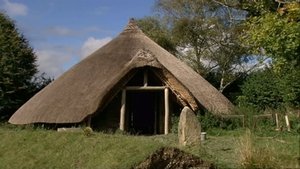
S20 Ep12
6.8
17th Mar 2013
Tony Robinson celebrates the 150 experiments and re-creations Time Team has conducted over 20 years, from Stone Age swords like Excalibur, to building an entire Iron Age house.

S6 Ep12
6.8
21st Mar 1999
Invited by historian David Small, the team are on the tiny Caribbean island of Nevis, for a six-day dig to uncover the history of sugar production and slavery here. They are investigating a particular plantation, Montravers Estate, now overgrown, originally owned by wealthy 18th century Bristolean John Prater Pinney. Robin visits Bristol University, researching the extensive documentation. Back on Nevis, pottery expert David Barker is shown pottery sherds, most of which he dates to the 1840s. Phil crosses to neighbouring St. Kitts, to help make sugar from sugar cane. Sugar would have been extracted in a mill operated by teams of oxen. Molasses, the byproduct of sugar processing, was fermented to make rum. In the jungle Stewart searches for a slave village. They are also joined by local historian David Rollinson.
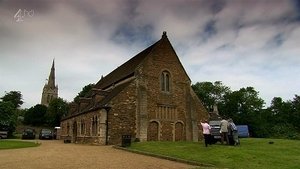
S20 Ep7
6.8
10th Feb 2013
Oakham Castle is the best preserved 12th-century building in Britain, but there's much more to it than meets the eye.
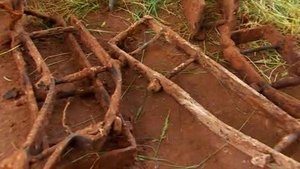
S14 Ep9
6.8
11th Mar 2007
Time Team have never excavated a watermill before. Despite the fact that they were plentiful in historic times, these features have been under-researched. Heading to the River Otter in Devon, the team excavate a site dating back at least to the Domesday Book of 1086, yet the last mill building on the site was pulled down as recently as the 1960s. They are joined by Martin Watts (mill historian), industrial archaeologist Mike Nevell, and Finds specialist John Allan. Tony visits the working mill at nearby Otterton.
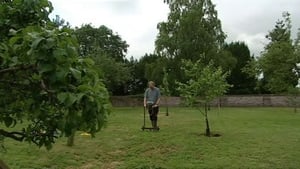
S12 Ep2
6.9
9th Jan 2005
The villagers of Nether Poppleton, near York, join Tony Robinson and the team for some extensive digging as they try to determine the exact age of their village. The current layout follows a typical medieval pattern but a reference to the village in the Domesday Book has the experts thinking that it could date back to Saxon times at least.
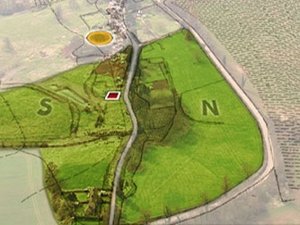
S13 Ep1
6.9
22nd Jan 2006
The Team is visiting Glendon Hall to unravel the mystery of the human skeletons found under an outbuilding. The team are joined by Richard Morriss (historic building consultant) and Glenn Foard (landscape archaeologist).
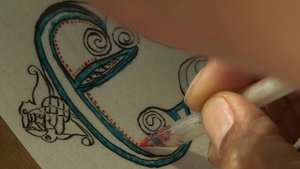
S19 Ep5
6.9
19th Feb 2012
Tony leads the Team to the village of Beadnell on a beautiful stretch of the Northumbrian coast, to explore an unusual promontory, from which mysterious fragments of human bone have emerged over recent years. The team are joined by Anglo-Saxon historian Sam Newton, vicar Jane Wood and small finds expert Danielle Wootton. Calligrapher Suzanne Moore investigates techniques used by monks inscribing and illuminating the Lindisfarne Gospels.

S10 Ep5
6.9
2nd Feb 2003
Time Team investigates Placentia, the Greenwich palace of king Henry VIII. They try to locate his royal armoury and the tiltyard, where the court and nobility would have jousted and been entertained in mock castles. In the experimental part of the program, Tony looks at how Tudor armour would have been made and gets a breastplate of the period hammered and fitted. The armoury as a turns out to be too elusive for the archaeologists, but localized amounts of hammer scale, a residual product of forging, indicate its presence there. However, the tiltyard complex with its associated structures, like the banqueting hall, are firmly located.
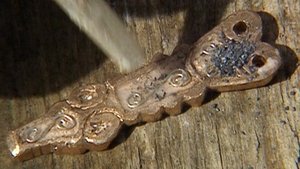
S6 Ep11
6.9
14th Mar 1999
This live dig centres on a ruined Norman church on a hill in Norfolk. This National Trust site promises to be the richest source of finds that Time Team have yet seen, with previous evidence of human occupation from most periods in antiquity. This requires several trenches, including the longest one that Time Team have ever dug. They start with some fieldwalking and metal detectoring, before digging in earnest. Among many finds are a bronze age arrow head, a medieval tiled floor, coins and several well-preserved skeletons. One skull shows clear evidence of having been brutally slaughtered by a swordsman on horseback. The team are joined by Helen Geake, Neil Holbrook, Andrew Rogerson, pottery expert Paul Blinkhorn, osteoarchaeologist Margaret Cox, and historian John Blair. Celebrities Sandi Toksvig and Hugh Fearnley-Whittingstall also drop in. Hugh and Victor help Saxon re-enactor Russell Scott to recreate a bronze artefact from scratch.
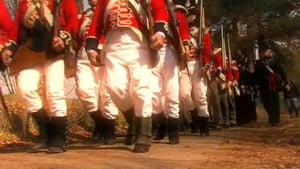
S14 Ep5
6.9
11th Feb 2007
The team investigate the remains of Shorncliffe Redoubt, the first fort built to defend the English south coast from invasion by revolutionary French forces in the 1790s.
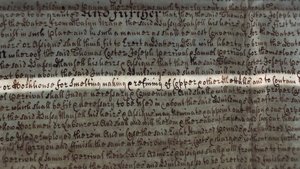
S19 Ep6
6.9
26th Feb 2012
Two hundred years ago, Swansea was one of the wealthiest cities in the country, if not the world. The source of those riches was neither the coal nor the steel recently associated with the area, but copper.
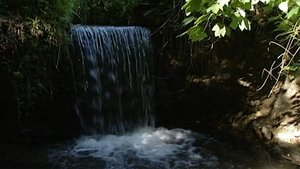
S9 Ep5
7.0
3rd Feb 2002
The team head for a pub in Leighton, whose cellar contains the remains of a blast furnace once used for smelting iron. When Tony arrives, test pits are already being dug, and Geophysics are busy surveying the car park. They are joined by Paul Belford from Ironbrige Gorge Museum; and Jonathan Roberts shows Phil how to make a triangular charcoal clamp similar to those used in the 17th century. Mick visits the nearby Blists Hill Victorian Town, where Roger Fewtrell demonstrates making a 24 pound cannonball. They are also joined by researcher Colin Thom, industrial archaeologist Rob Kinchin-Smith, archaeometallurgist Gerry McDonnell, and finds expert Ceinwen Paynton.

S9 Ep8
7.0
24th Feb 2002
The owners of a Tudor house, High Ercall Hall, want Time Team to investigate a bloody confrontation between the Roundheads and Cavaliers during the English Civil War, 350 years ago. In front of the house are four mysterious arches. Could they be relics of an older, medieval building, which apparently stood here for centuries before the present building? They are joined by buildings expert Richard K. Morriss, and Civil War specialist Glenn Foard.

S11 Ep3
7.0
18th Jan 2004
There's an island-ish round area of stones in Loch Migdale - could it be a crannog? 200 meters away on the banks is a small (12 m diameter) circular feature - is it a henge? Time Team rounds up some experts on the prehistoric and finds out. They set up a suction dredge to investigate two areas of the loch feature, and find wonderfully preserved timber, proving that it's a built structure and thus a crannog. GPS surveying and a tip from a local farmer finds the causeway, now underwater, leading to it Trenches within the henge show that the entrance and wooden posts within it pointed towards notable features in the landscape. Stewart looks for the find site of the Migdale Hoard.

S11 Ep10
7.0
7th Mar 2004
Digging up fields and car parks and back gardens is all very well, but how could Time Team pass up a chance to dig up a living room? The manor house in Nassington was purchased in a derelict state, and while restoring it, several massive post holes were investigated that are of a size and spacing to be a Saxon great hall. The pottery finds from the property suggest almost constant occupation from the Iron Age to the present, and the Ramsey Chronicle records that Cnut owned Nassington while king. Up comes the flooring so three trenches can be dug inside the house, while outside, various trenches are dug in the garden. It seems that hall after hall was built where the manor house still stands, but no trace can any longer be found of outbuildings which must have been there. Graeme Lawson visits with a selection of Dark Ages musical instruments, makes a reed pipe of elder wood, and plays out the episode with the Time Team theme music on pipe and lyre.
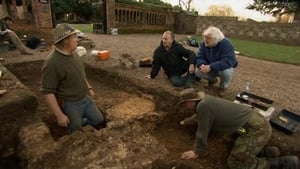
S12 Ep1
7.0
2nd Jan 2005
Tony Robinson and the team visit Chenies Manor which is believed to have been upgraded in time for Henry VIII's visit around 1530. However, while a late 16th-century inventory suggests that an additional range of rooms fit for a king once existed, traces of them have vanished since the house fell into disrepair. Can the experts uncover the layout of the building as it appeared in Tudor times?
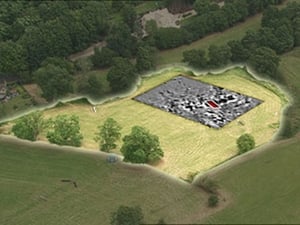
S13 Ep2
7.0
29th Jan 2006
When a colony of moles brings up pieces of mosaic floor in a Cotswold field, Tony Robinson and the team investigate whether the findings could be linked to a nearby Roman villa discovered almost 200 years ago. A local spring might give a clue to the true purpose of the building. The team are joined by local archaeologist Roger Box, and Roman specialists David Neal and Richard Reece.
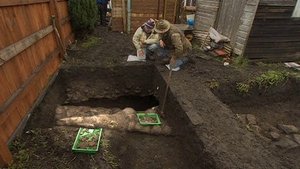
S13 Ep11
7.0
2nd Apr 2006
The team descend on the village of Ffrith in North Wales to discover if it is built on the remains of a Roman mining town. The main street runs along the route of Offa's Dyke. The dig involves excavating two gardens and the playing field, but the team are frustrated in their attempts to find a Roman bath house. The team are joined by archaeologist Chris Martin and historian David Mason.
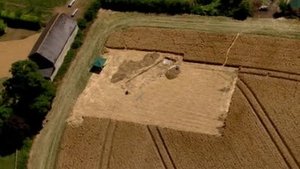
S14 Ep7
7.0
25th Feb 2007
The team descend on the village of Wicken to investigate the local history. Digging in residents' gardens and surrounding fields, the team uncover a mysterious church, an ancient burial ground and evidence of a Saxon community.
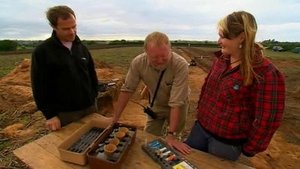
S14 Ep8
7.0
4th Mar 2007
The team arrive at a field outside Cheshire where metal detectorists have made several valuable finds in the past, hinting the site was once a very active Roman settlement. However, the complete lack of finds causes serious concern amongst our intrepid explorers. They are joined by Mike Nevell from the University of Manchester, Roman historian David Shotter, and Robert Philpott from Liverpool Museum. Archeometallurgist Andrew Lacey fashions a simple Roman snake bracelet. Famously, this is the episode where Tony declares "We've done what we always threatened: after 160 programmes, we found - nothing."
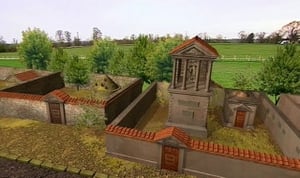
S15 Ep2
7.0
13th Jan 2008
Tony and the team tackle a huge Roman fort in County Durham. The stronghold was part of the defence of Dere Street, the main Roman road from York to Hadrian's Wall. The fort has fine mosaics and preserved rooms, but the Team have just three days to find out everything they can about the 'vicus', that's the civilian settlement around the fort, vital for the smooth running of the military machine and providing for the pleasures of the men garrisoned there. However, they soon discover something even more exciting during the dig - a series of military mausoleums, the first discovery of its kind for over 150 years. They also discover the remains of food eaten by the descendants of the dead during ritual meals.
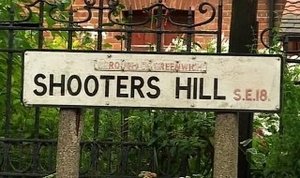
S15 Ep6
7.0
10th Feb 2008
The Team delve into the very recent past to uncover the hidden archaeology of the biggest British battle that never was: the defence of Britain against a Nazi invasion in 1940. Along the busy main roads and in the quiet back gardens of a London suburb they uncover evidence of anti-tank weapons, secret bunkers and massive flame throwers.

S16 Ep4
7.0
25th Jan 2009
Caerwent is the best-preserved Roman town in Britain. Laid out on a grid pattern, it has 20 blocks within its walls, which still stand at heights of up to five metres in places. Previous excavations have uncovered roads, temples, shops, baths, houses and villas, as well as the forum and basilica, the town's political centre.
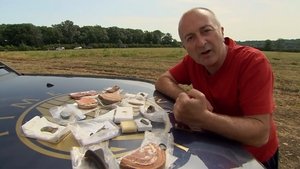
S16 Ep8
7.0
22nd Feb 2009
The Team are invited to investigate a Bedfordshire field by a group of amateur archaeologists who have found countless pieces of Roman pottery, coins and building material over the years. In a field next to a science park in Colworth, Bedfordshire, a group of amateur archaeologists have turned up a huge collection of material dating back almost 2,000 years.
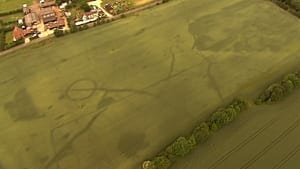
S17 Ep4
7.0
9th May 2010
In Sutton Courtenay Tony Robinson and the Team investigate a set of buildings once occupied by Anglo Saxon royalty. It's the rarest of archaeological sites and uncovers the biggest Saxon building ever discovered in Britain. Aerial photography of an apparently featureless Oxfordshire field revealed crop marks that suggested to archaeologists it was once the site of an impressive collection of 1,400-year-old buildings; but Time Team's digging expertise was needed to verify this. The trenches are big and the archaeology complicated but slowly the Team begin to build up a picture of life here over 1,000 years ago, with the help of heroic Saxon poetry. As well as stunning finds and the perplexing possibility that they have uncovered an Anglo Saxon totem pole, the archaeologists also discover a culture where heroism, story telling and drinking go hand in hand, and learn the finer points of how to insult your colleagues in Old English.

S19 Ep1
7.0
22nd Jan 2012
Tony Robinson and the team visit a tiny windswept island off the coast of Wales. The only way to get to it is by rigging a 500-metre zip wire way above the wave-lashed rocks.
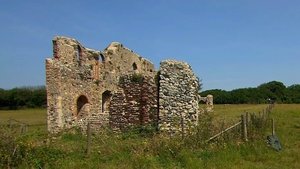
S19 Ep3
7.0
5th Feb 2012
Tony Robinson and the Team head to Dunwich, a village that's literally falling off the edge of the UK. Coastal erosion has eaten away most of this once-bustling settlement, and before the whole place is lost to the sea, there's a last chance to find out more about the lost origins of this dramatically situated town. The team are joined by historian Mark Bailey, architectural consultant Richard K. Morriss, Kyle Brown from the Environment Agency, John Ette from English Heritage, and Professor David Sear.
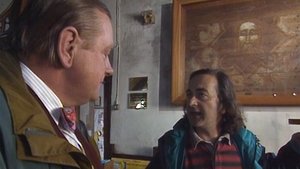
S3 Ep3
7.1
21st Jan 1996
Recorded between 26 and 28 May 1995. A 13th century picture of Christ, strikingly similar to that on the Turin Shroud, has turned up. It's believed to belong to the Knights Templar, a medieval order of monks who gave their name to the village of Templecombe. The team investigate a manor house thought to be on the site of a monastery. What's left of the monastery, and who were the Templars anyway? So far all the evidence seems to be outside the house, where Phil and the team have already dug up pieces of encaustic tile. Carenza and Robin are doing some research among the documents.
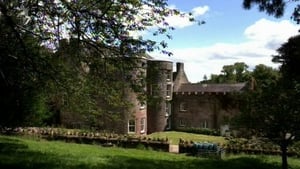
S20 Ep11
7.1
10th Mar 2013
When Steve and Pru bought pretty Upton Castle in Pembrokeshire they weren't sure if it was a Victorian folly or an Anglo-Norman castle, built to defend 'Little England beyond Wales' from the locals.

S20 Ep1
7.1
11th Nov 2012
Golfers at a popular East Midlands golf club now know that a huge wooded bank beside their fairway is a rather special area of 'rough', an old machine gun firing range.
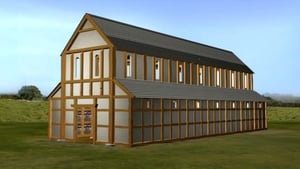
S7 Ep10
7.1
5th Mar 2000
Time Team are in Freen's Court on the English-Welsh border. A recent aerial photograph shows parch marks. The kingdom of Mercia was ruled by the ruthless eighth century King Offa. Could this be his palace? All sorts of colourful legends are associated with the site. But they are having trouble locating the parch marks on the ground. As it's a protected monument, they must dig by hand under the watchful eye of English Heritage inspector Paul Stamper. There are some medieval remains but so far nothing Anglo-Saxon. They are joined by historian John Blair, County Archaeologist Keith Ray, and pottery expert Alan Vince. Phil helps experts Richard Darrer and Guy Apter to make a replica wooden cement mixer.

S15 Ep11
7.1
16th Mar 2008
The Time Team travel to County Durham to investigate the origins of a mysterious large stone structure which has had locals baffled for centuries. The stone structure is known locally as The Castles, its five-metre thick walls enclose a space the size of a football pitch.With guesses ranging from an Iron Age farm to a Roman prison, Tony Robinson and the team attempt to come up with a definitive answer.
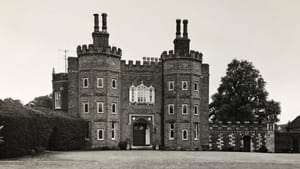
S19 Ep7
7.1
4th Mar 2012
Tony and the team rip up the pristine lawns of Paul Whight's stately home in search of the secrets of its illustrious former owners: the De Veres, who built a priory here in the 12th century. They are also hoping to discover the later manor house. There is a rumour that the dissolute 17th Earl, Edward, wrote at least some of William Shakespeare's plays, and could be buried here, along with his ancestors and descendants. Geophysics is now able to produce 3D images of what is underground; while Jackie has plenty of bones to look at. Alex helps stone carver Lucy Churchill to carve some de Vere symbols from blocks of rare alabaster. Among the many finds are stained glass and encaustic tiles. They are joined by Anna Whitelock from the University of London. Finally, state-of-the-art laser technology entombs Alex in his own sarcophagus.

S17 Ep6
7.1
23rd May 2010
Time Team visits the heart of Wiltshire for one of their most ambitious projects ever: to investigate an entire lost Roman town. Hidden under acres of wheat, Cunetio would once have been a bustling market centre. It's also the place where Britain's largest ever coin hoard was found. In the 1970s a pot containing 55,000 Roman coins was discovered, and one of the archaeologists called in to deal with it was Time Team's own Phil Harding. Now, 30 years later, he's back to dig this massive site and to find out how much effort is required to bury 55,000 coins. Over the three days, the scale of the site pushes the Team to the limit. Hampered by driving rain, the archaeologists battle to make sense of trenches that contain hundreds of years' worth of archaeology, while the geophysics team make almost half a million readings to complete the biggest survey ever recorded on Time Team.
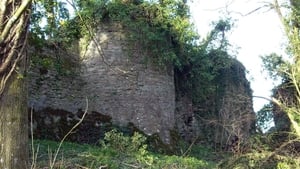
S17 Ep8
7.1
10th Oct 2010
Tony Robinson and the Team find themselves lost in the mists of a Welsh forest as they investigate one of the biggest castles in Britain. Their task is to investigate the castle's mysterious interior and find out how this impressive structure fitted into a network of fortresses built by powerful English barons 700 years ago.
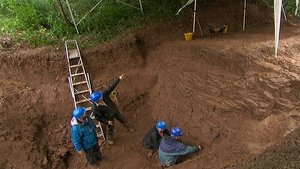
S17 Ep12
7.1
7th Nov 2010
Tony and the Time Team climb a remote Herefordshire hill to investigate one of the biggest prehistoric sites ever featured. Was Dinmore Hill the site of a vast Iron Age hill fort? Needless to say Stewart doesn't think so. He is going with a much earlier cross-ridge dyke. To prove it one way or the other they need dateable finds. But the dig is hampered by torrential rain. Despite this they uncover a huge, magnificent ditch, which must have been dug by thousands of people during the Iron Age. The team are joined by historian Bettany Hughes, Hereford county archaeologist Keith Ray and environmental archaeologist Mike Allen.
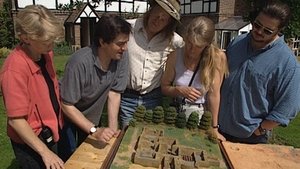
S6 Ep7
7.1
14th Feb 1999
Historian Guy de la Bedoyere asks the team to investigate the isolated ruins of a bath-house, discovered by Gerald Brodribb in the midst of dense Sussex woodland. Gerald has made a scale model of the building, and Guy explains the connection to the Roman navy. After a demonstration of dowsing from Gerald, the team's first task is to clear the land before digging. With ancient technology expert Jake Keen and blacksmith Reg Miles, Phil attempts to smelt iron using a traditional furnace. The team are also joined by archaeometallurgist Gerry McDonnell.

S12 Ep9
7.1
27th Feb 2005
7th century Vikings sailed up an Essex creek. Legends tells hold they captured a nun who was offered her modesty or her mortality, chose death. The nun carried her severed head up the hill to her church and collapsed. A spring bubbled up. The nun was St Osyth, the wife of the King of Essex. The site of her death became a shrine and a settlement grew up. In the 12th century Richard de Belmais, Bishop of London, founded an Augustinian Priory in the village. It prospered until the Dissolution in 1539 and was one of the wealthiest monasteries in Europe. A few years ago a local boatbuilder noticed some decayed timbers in the mud of St Osyth Creek. The tides gradually revealed more of these timbers, which are on a significant bend in the channel. These timbers could be the remains of a medieval wharf which served the town in its early days, but they could also be the key to a much bigger mystery. The present town seems to date to the 15th century but the famous Priory is much older.
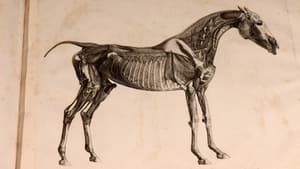
S19 Ep4
7.1
12th Feb 2012
Tony and the Team visit Newmarket, the birthplace of horseracing, in search of the earliest archaeological traces of the sport of kings. They dig in the heart of the historic town, in search of the remains of King Charles II's racing stables - arguably the world's first stables dedicated to racing. Bone specialist Jackie McKinley talks about horse skeletons with Christopher Garibaldi at the National Horseracing Museum.

S19 Ep10
7.1
1st Apr 2012
For generations a family of Somerset farmers have been wondering if there was ever actually a castle on top of the hill they call Castle Hill. A medieval charter refers to a Norman castle in the area, but they are not clear about exactly where and there are several likely locations. Geophysics' radar shows a large rectangular structure, possibly a keep. There is debate as to whether it was timber or stone. Raksha and Paul are excited by some 12th century pottery, indicating that the building may date from the Anarchy period rather than the Norman conquest. Moreover, a metal spur hints at a cavalry based fort. They are joined by castles expert Marc Morris, and quarryman Zak England demonstrates how to split a stone. Phil tastes mead for the first time. Mick is beginning to doubt whether the building was ever completed.
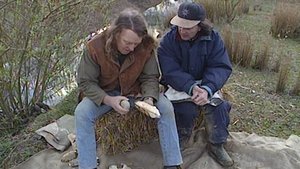
S3 Ep2
7.2
14th Jan 1996
Recorded between 21 and 23 April 1995, in this episode the team go to a gravel pit that is soon to become landfill, where they attempt to unearth 200,000-year-old remains of mammoths and other prehistoric animals. Gravel pits are typical sites for paleolithic remains. But the chances of finding evidence of any prehistoric peoples are remote. Joining the team are Christine Buckingham, Kate Scott, and palaeontologist Russell Coope. Wood anatomist Rowena Gale tries to match ancient and modern wood samples For this episode the team are joined by archaeologist Kate Scott and geologist Christine Buckingham.
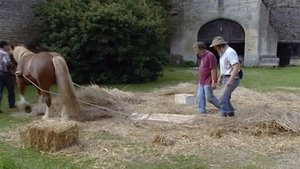
S8 Ep4
7.2
28th Jan 2001
Time Team want to paint a picture of a family living in a Roman villa in the Cotswolds almost 2000 years ago. So they decide to dig a site near Fosse Way, only a few hundred metres from two previously excavated villas, in an area unusually dense with Roman remains. They are joined by Neil Holbrook, Roman specialist Richard Reece, and Finds specialist Alex Croom. Phil helps Peter Reynolds reconstruct a tribulum, a Roman threshing board. And the experts conclude that the villa was built very early after the Roman invasion, but abandoned – possibly for financial reasons – quite soon after.
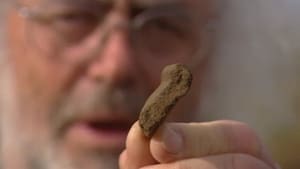
S9 Ep12
7.2
24th Mar 2002
Two years ago, local archaeologist Kevin Trott discovered Roman remains in a trench being dug for a water pipe. Unfortunately the trench had to be closed, and now Time Team are having trouble finding it. While Phil and the diggers look for the original trench, a full-scale field-walking exercise reveals many finds, both Roman and Iron Age; including a lot of bronze jewellery, seeming to show industrial activity. There are hints that enamelling was carried out here, so they decide to make their own enamelled hare brooch. Mick and Tony visit a nearby Roman villa with a detailed mosaic floor. On day three, Stewart spots some potential earthworks in a neighbouring field; so they decide to dig some exploratory trenches there. They end up with examples of activity from the Bronze Age, Iron Age, Roman occupation, and Anglo-Saxon period. To cap it all, at the end of day three they find a rare Iron Age burial. The team are joined for the first of many digs by Anglo-Saxon expert Helen Geake.
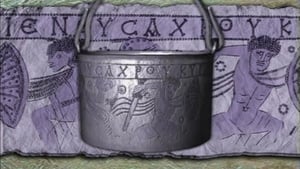
S9 Ep13
7.2
31st Mar 2002
A Byzantine brass bucket was found during a 3-day live dig in a Saxon cemetery a year ago. Time Team returns to find out more about the people who lived and died here. Metal detectorists are called in to find non-ferrous metals, to complement Geophysics' magnetometer survey. They are joined by Anglo-Saxon specialist Andrew Reynolds, paleopathologist Alice Roberts and celebrity Sandi Toksvig. Sandi's ancestors were from Jutland, and Robin Bush argues that this whole area of Hampshire was actually occupied by Jutes before they were defeated by the Saxons under King Cadwalla in 686 AD. Ray Walton replicates a brass bucket, complete with inscriptions and silvering, from scratch. Osteoarchaeologist Margaret Cox tries to make sense of the burials including rare double burials – one of which uniquely has a child placed between two men. Finds include weapons and an exquisite enamelled belt buckle; and three more of the mysterious buckets, which all fit one inside the other.

S10 Ep6
7.2
9th Feb 2003
Tony Robinson and the team are hunting for Liberty's first factory in South London. 'Liberty silks' still evoke images of opulence and beauty, of floating dresses and more leisurely times. But their hunt proves far from leisurely. Day three of the search brings the vital breakthrough – as well as an extraordinary attempt to recreate the 19th-century techniques of dying and printing those wonderful silks.
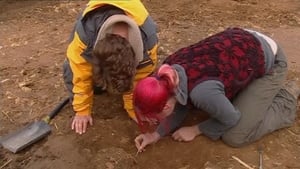
S11 Ep4
7.2
25th Jan 2004
The team investigate a possible fifth century cemetery in a ploughed field, where they find a metal shield boss. One male skeleton is holding a drinking vessel. There are hints of much earlier activity as well, including a Bronze Age barrow. Using authentic tools, they fashion a Saxon shield. Conservator Dana Goodburn-Brown examines the details in the x-rays of the shield boss; while Phil and members of Regia Anglorum demonstrate how the shields are used in battle. They are joined by bone specialists Alice Roberts and Margaret Cox, who unearth some coloured beads among the remains.

S16 Ep5
7.2
1st Feb 2009
Time Team visits the Yorkshire Dales to investigate the Risehill camp settlement, inhabited by the Victorian railway navvies during the construction of the Settle-to-Carlisle railway. On a wind- and rain-swept Yorkshire moor – 'the most exposed site Time Team has ever dug on,' according to Tony Robinson – lie the remains of a settlement built by a tough, nomadic community that existed on the very edge of society.
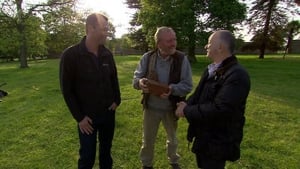
S20 Ep4
7.2
20th Jan 2014
Tony and the team attempt to help Hektor Rous, the son of 'Aussie Earl' Keith Rous, work out the mysterious history of the family's Tudor country home in Suffolk.

S18 Ep9
7.2
3rd Apr 2011
Investigating an archaeologist's dream. An ancient moat has been discovered and no one knows what it once protected. Was it an early Welsh chapel, a Roman fort, a fortified cattle enclosure, or even the ancestral home of one of Wales's most important families?
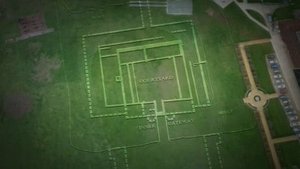
S20 Ep10
7.2
3rd Mar 2013
In the 1950s a group of schoolboys found the remains of Britain's most opulent palace under their playing field. Now Tony and the Team try to piece together this massive Tudor puzzle.
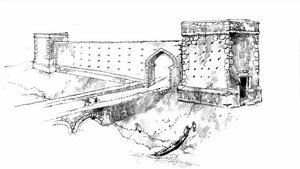
S7 Ep1
7.2
2nd Jan 2000
1000 years ago, the port of Denia on the Costa Blanca used to be a thriving Islamic outpost in medieval Europe, before being Christianised in 1242. During this period Spain benefitted from a sophisticated Arab culture, including maths, astronomy and art. Members of Time Team are here to help with a major dig, before the site is redeveloped. They are particularly hoping for evidence of Islamic pottery and burials. Bone specialist Jackie looks at the many skeletons that have already been discovered. Phil has been invited to do a spot of scuba diving, all in the line of duty. Moroccan chef Mustapha Saaida tempts Carenza with some authentic spice-laden 900-year-old dishes, with ingredients from the local market. Mick "the Dig" is helping to uncover a kiln complete with pottery sherds. Victor sketches a complete landscape of the old town.

S2 Ep5
7.3
5th Feb 1995
The Time Team travel to Winterbourne Gunner in Wiltshire to investigate a housing development that has come to a halt because of an alarming number of Saxon graves found in the area They successfully work their way through the maze of finds but in doing so discover what seems to be a whole new layer of history in the town.
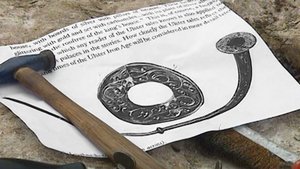
S3 Ep5
7.3
4th Feb 1996
Recorded between 7 and 9 April 1995, the team are at Emain Macha (aka Navan Fort), County Armagh, where according to Celtic legends three palaces were built. The evidence of two have been found and the team try to find evidence of the third.
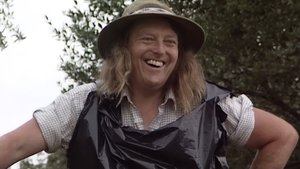
S5 Ep5
7.3
1st Feb 1998
Time Team goes abroad to tackle one of its most challenging sites. They search for evidence of one of the most enigmatic cultures in the world on the Spanish island of Mallorca. The Beaker people flourished in Europe around 4,000 BC, but there is very little evidence of their civilisation, which is thought to have made the first use of metal.

S1 Ep1
8.1
16th Jan 1994
In this first ever episode of Time Team, Tony and the team travel to Athelney in Somerset to investigate a series of hills (once islands in a bog) that became Alfred The Great last defensive positions after a series of losses to invading Viking forces. It is also the place Alfred began the great rally that saw him re-conquer most Wessex and laid the foundations of the nation that was to become England.

S1 Ep2
7.8
23rd Jan 1994
Ribchester in Lancashire has been known for some time as a site of a Roman fort. The Time Team arrive in the town to answer two questions, one is to consolidate all the previous excavations on the site, and the second to define the outline of a possible older wooden fort that is thought to have been in the area.

S1 Ep3
8.0
30th Jan 1994
The Time Team go to the small town of Much Wenlock, after they receive a letter from a resident explains a recent excavation uncovered possibly the oldest house in the town. What they discover is the remains of an old Saxon village transitioning into a larger newer Norman settlement.

S1 Ep4
8.0
6th Feb 1994
The Time Team travel to Brecon Beacons in Wales, they have come to investigate a small man-made island in Llangorse Lake. Locals tell many strange legends including hearing the sounds of Church bells echoing across the body of water at night. The Team want to know who built the island and try to find evidence to support the stories of it eventual fall into disuse.
Loading...
The first episode of Time Team aired on January 16, 1994.
The last episode of Time Team aired on May 20, 2025.
There are 246 episodes of Time Team.
There are 21 seasons of Time Team.
Yes.
Time Team is set to return for future episodes.